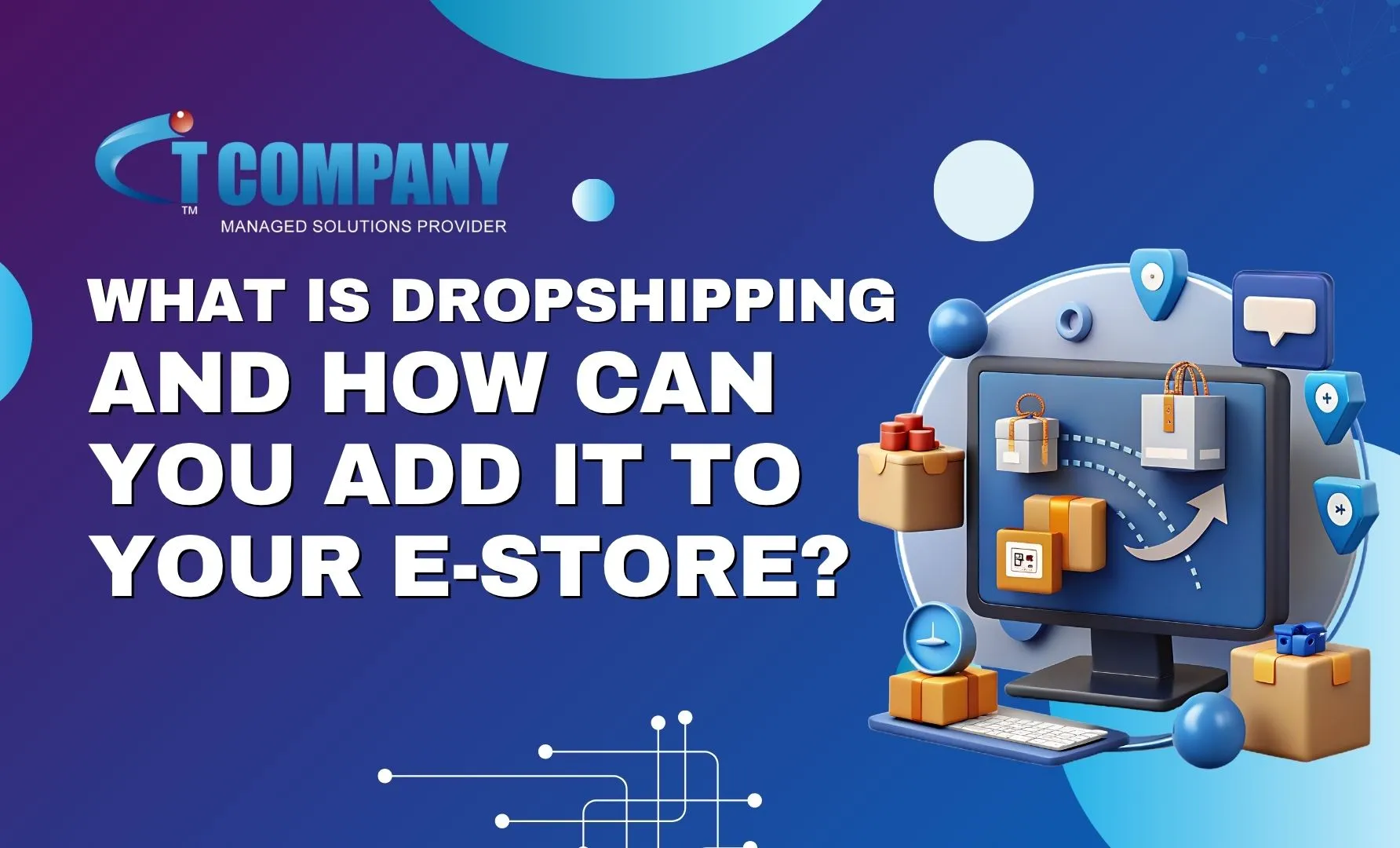Introduction
If you’re looking to build or expand your eCommerce business, you’ve probably heard of dropshipping—a popular business model that’s taken the online retail world by storm. But, what exactly is dropshipping, and how can you add it to your e-store?
In this guide, we’ll break down everything you need to know about dropshipping in 2025. Whether you’re considering launching a new eCommerce store or enhancing an existing one, this post will provide a clear roadmap to integrate dropshipping into your business model.
By the time you finish reading this piece, you will know how to begin dropshipping, which platforms are ideal to use, and how to locate suppliers to get your business off the ground. Additionally, we’ll go over the main distinctions between print-on-demand, a popular substitute in the eCommerce industry, and dropshipping.
Consider utilizing the experience of businesses like TechMasters Solutions, an IT firm renowned for providing state-of-the-art automation tools and eCommerce integrations that can streamline your dropshipping operations, if you’re looking to incorporate cutting-edge technology to expedite the dropshipping process.
What Is Dropshipping?
At its core, dropshipping is a retail fulfillment method that allows you to sell products to customers without holding any inventory. You work with suppliers who send the goods straight to your consumers after they make a purchase on your shop, saving you the trouble of purchasing inventory up front and keeping it in storage. This eliminates the need for stock management since you only pay for the product after a transaction is completed.
The dropshipping business model works like this:
- A customer orders a product from your online store.
- You forward the order to the supplier or manufacturer.
- The supplier ships the product directly to the customer.
This concept removes the headache of inventory management and warehousing, lowers the initial cost of opening an internet store, and lowers risk. However, it also has drawbacks of its own, like depending on other vendors for customer support, shipping schedules, and quality assurance.
How to Start Dropshipping
Starting a dropshipping business involves several steps, and while the process is fairly simple, it requires careful planning and execution. Here’s how you can get started:
Step 1: Choose Your Niche
Before you dive into dropshipping, it’s crucial to select a niche. Your niche will define the products you’ll sell, your target audience, and your overall branding. It’s best to choose a niche you’re passionate about, as this will make the process much more enjoyable.
Step 2: Find Reliable Suppliers
The success of your dropshipping business depends largely on the suppliers you choose. Look for suppliers that are reliable, have quality products, and offer reasonable shipping times. Websites like AliExpress, Oberlo, and SaleHoo can help you find credible suppliers.
Step 3: Build Your Store
Once you’ve got your niche and suppliers in place, it’s time to set up your store. You can use platforms like Shopify or WooCommerce to create an attractive, user-friendly store. Shopify is particularly great for beginners due to its simplicity and integration with dropshipping tools.
Step 4: Add Products and Set Prices
The products you wish to sell must be added after your store is set up. To sync products from your suppliers straight to your store, you may either do this manually or with an automated dropshipping platform. Make sure your prices are competitive, taking into account your intended profit margin, delivery costs, and the cost of the goods.
Step 5: Market Your Store
Concentrate on digital marketing techniques including influencer relationships, email marketing, social media ads, and SEO to increase traffic to your store. To distinguish out in the crowded dropshipping market, you need a solid marketing strategy.
Key Benefits of Dropshipping
- Low Startup Costs
Since you don’t need to purchase inventory upfront, dropshipping is a cost-effective business model for new entrepreneurs. - Wide Product Selection
You can sell a wide variety of products without worrying about stock levels, as suppliers manage this for you. - Flexibility and Scalability
Dropshipping allows you to work from anywhere and scale your business easily by adding more products or increasing marketing efforts. - Reduced Risk
Since you don’t have to buy products upfront, your financial risk is significantly lower than with traditional retail models.
Best Dropshipping Platforms in 2025
As eCommerce continues to evolve, the landscape of dropshipping platforms keeps changing. Here are some of the best platforms to consider in 2025:
- Shopify
Shopify remains one of the most popular choices for dropshipping, offering seamless integration with apps like Oberlo and Spocket for product sourcing. - WooCommerce
If you’re already using WordPress, WooCommerce is a great choice. It’s an open-source platform that gives you full control over your store, and there are many dropshipping plugins to help streamline the process. - BigCommerce
BigCommerce offers advanced features for larger stores and is perfect for scaling your dropshipping business. - Squarespace
For those looking for a simple, aesthetically-pleasing platform, Squarespace is a good option. It’s easy to use, although it’s not as feature-rich as Shopify.
To enhance your platform’s performance, consider partnering with an IT company, which specializes in custom integrations, automation, and optimization for eCommerce platforms, helping you streamline your dropshipping processes.
Print-on-Demand vs Dropshipping
Both print-on-demand (POD) and dropshipping are popular eCommerce models, but they operate differently.
- Print-on-demand allows you to sell custom products (like T-shirts, mugs, or posters) without holding inventory. The difference here is that your products are printed with your designs only when a customer orders them.
- Dropshipping, on the other hand, involves selling pre-made products from suppliers without handling any inventory.
While both models have their benefits, dropshipping offers more product variety, while POD allows for more customization and creativity.
How to Add Dropshipping to Your Existing Online Store
If you already have an established eCommerce store, adding dropshipping is a straightforward process. Here’s how you can do it:
- Install a Dropshipping Plugin or App
For Shopify, apps like Oberlo or DSers integrate directly into your store and make it easy to import dropshipping products. For WooCommerce, there are several dropshipping plugins available. - Add Products
Once the integration is set up, you can browse your supplier’s product catalog and add items directly to your store. - Set Up Payment and Shipping
Ensure that your payment gateways are set up and that you’ve clearly defined shipping policies for your customers. - Test and Launch
Before going live, test the process from placing an order to shipping to ensure that everything works smoothly.
Choosing the Right Supplier for Your Dropshipping Store
When selecting a supplier for your dropshipping store, keep these factors in mind:
- Product Quality
You don’t want to sell subpar products that’ll hurt your reputation. Order samples to check the quality. - Shipping Times
Long shipping times can frustrate customers. Look for suppliers with fast and reliable shipping options, especially if you’re targeting a specific region like Australia. - Reliability
Choose suppliers with strong reviews and a reputation for fulfilling orders correctly and on time.
Drop shipping in Australia: What You Need to Know
If you’re targeting customers in Australia, there are some specifics to consider. Make sure your suppliers can ship to Australia with reasonable delivery times and costs. Additionally, be aware of any local regulations, including taxes like the Goods and Services Tax (GST) on imported goods.
Conclusion
In conclusion, drop shipping is an excellent way to start or grow your online store with minimal upfront investment and risk. Whether you’re using Shopify, WooCommerce, or another platform, integrating dropshipping into your business allows you to focus on what really matters—growing your brand and connecting with customers.
If you’re ready to take the plunge into the world of dropshipping, make sure to follow the steps outlined in this guide. The key to success is finding reliable suppliers, selecting the right platform, and marketing your store effectively.
For those looking to take their eCommerce operations to the next level, consider leveraging IT companies like TechMasters Solutions for technical integrations, automation, and expert eCommerce strategies.
Want to learn more? Check out our other articles on how to grow your eCommerce business!
FAQs
What is dropshipping, and how does it work?
What are the best dropshipping platforms?
Some of the top dropshipping platforms for 2025 include Shopify, WooCommerce, and BigCommerce.



















